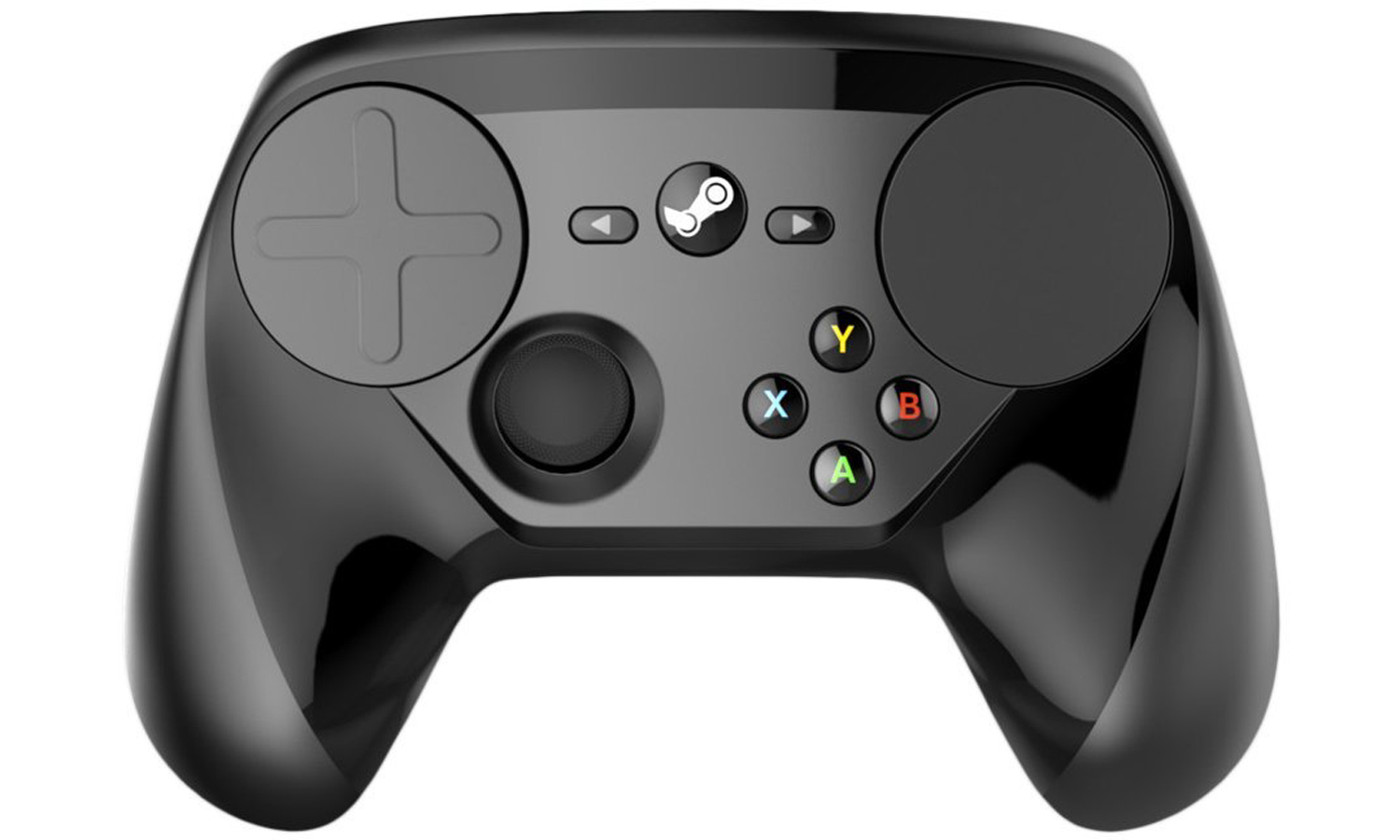Tom's Guide Verdict
While the Steam Controller can adequately replace a traditional game pad, a mouse and a keyboard all at the same time, it doesn't fill any of those devices' functions particularly well.
Pros
- +
Inventive haptic pad
- +
Incredibly deep customization
- +
Good companion for SteamOS
Cons
- -
Steep learning curve
- -
Bulky, uncomfortable design
- -
Inconsistent performance across genres
Why you can trust Tom's Guide
Have you ever noticed that the PlayStation controller has not changed very much in the last 20 years? There's a reason for that. The design works, and it works so well that almost every controller since has aped PlayStation's in some way. Valve's Steam Controller ($50), to its credit, tries something new and succeeds, at least on a technical level. This game pad's unusual design achieves its goal of making a full living-room PC experience possible, even without a mouse or keyboard.
This versatility comes at a cost, however. While the Steam Controller can adequately replace a traditional controller, a mouse and a keyboard all at the same time, it doesn't fill any of the functions of those devices particularly well. The impromptu mouse pad feels imprecise; there aren't enough buttons to replace a full-fledged keyboard, and it seems to introduce a limitation to just about every genre that wasn't there before.
The Steam controller is an intriguing idea, and for certain setups, it may even be a godsend. The peripheral still has a long way to go before it justifies itself to the general gaming populace, though.
Design
I've never seen anything that looks quite like the Steam Controller, which foregoes the traditional dual-analog stick setup in favor of something that looks much stranger. On the left, there's a large clickable directional pad front and center, with an analog stick toward the bottom. The D-pad is too large for my tastes and is actually only one button; the four directions respond with haptic feedback.
The right side of the controller is where things get weird, as well as potentially interesting. On the bottom, there are four face buttons. On the top, however, there's a touch-sensitive, haptic circle. There is nothing else like this on the market at present, and whether gamers like it could determine a lot about how PC controllers look in the months and years to come. By running your fingers and thumb over the pad, you can use it like a mouse, or to control a camera, or anything else you feel like programming into the controller. The concept is fascinating.
Aside from that, there are also two shoulder buttons on each side, as well as a button on each grip. The latter feature is also unique to the Steam controller (though the Xbox One Elite Controller and Razer Wildcat each have their own rear-facing controls). And of the peripheral's innovations, this is one of my favorites. Responding to the user gripping a little more tightly is a clever way to add a new button without making players reach for it. However, you may want to avoid mapping important functions to these buttons if you tend to tighten your grip inadvertently during heated game-play sessions.
There are also three buttons on the controller's face: one for options, one to pause and one to bring users back to the Steam main menu. The peripheral runneth over with buttons, and it's quite large: 6.1 x 4.3 x 2.0 inches. Compare this to a standard Xbox One controller, which is 5.9 x 4.0 x 1.5 inches. The Steam Controller is bulky and not that pretty, but it does house all the unusual innovations with which Valve wanted to imbue the device.
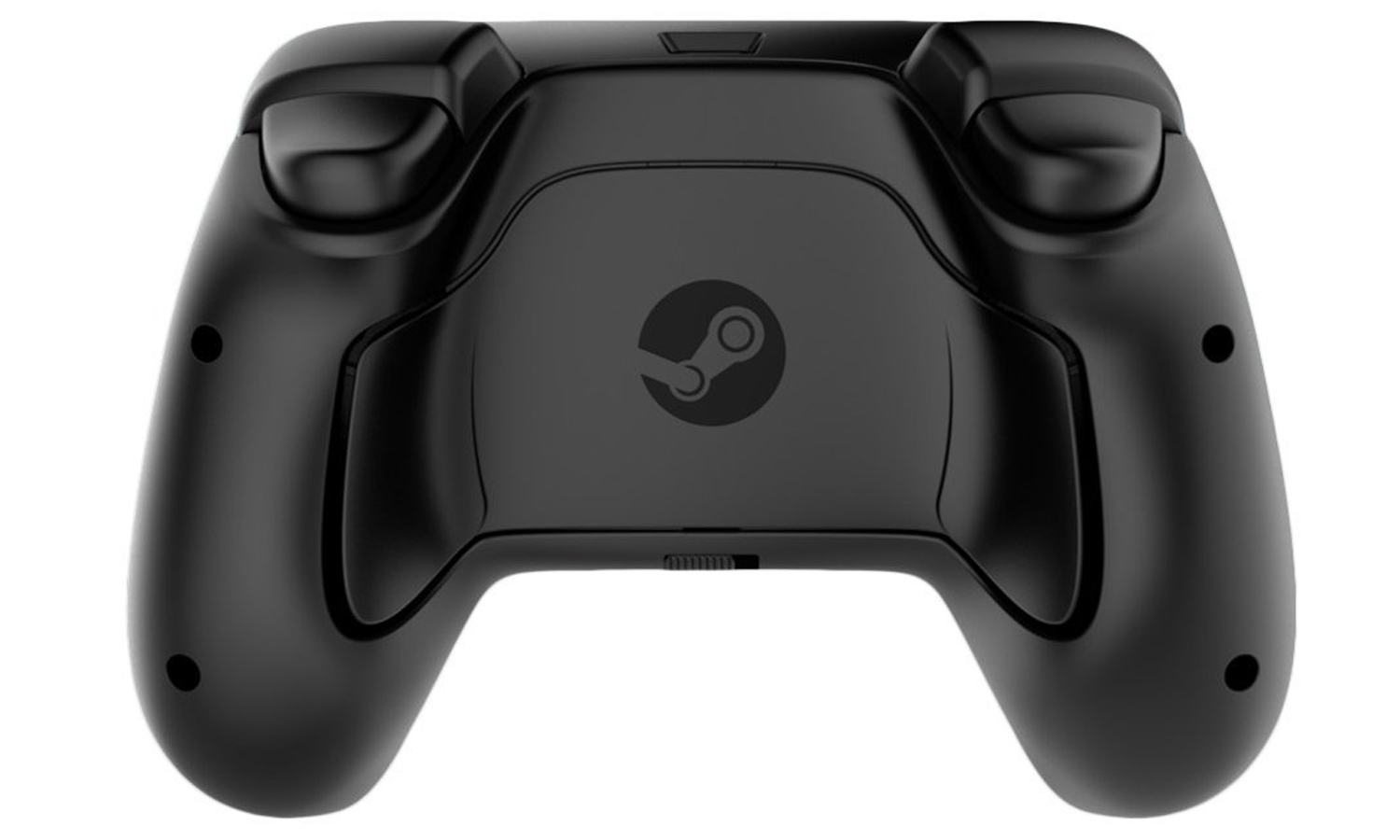
Even so, it's not terribly comfortable to hold. The buttons I needed the most were situated too low, and the handles felt much larger than they needed to be. If you remember the very first Xbox controller, the Steam Controller is very reminiscent of it: much bigger than it probably needs to be.
MORE: Best PC Game Controllers
Features
The Steam Controller works with either Windows or SteamOS, although its operation is basically the same either way. In order to use the Steam Controller on a Windows PC, Steam recommends that you transition into Big Picture mode, the client's optimal setting for living-room PC gaming. The controller connects via wireless dongle or USB cable on Windows, but it can connect to Steam Machines without any extra peripherals.
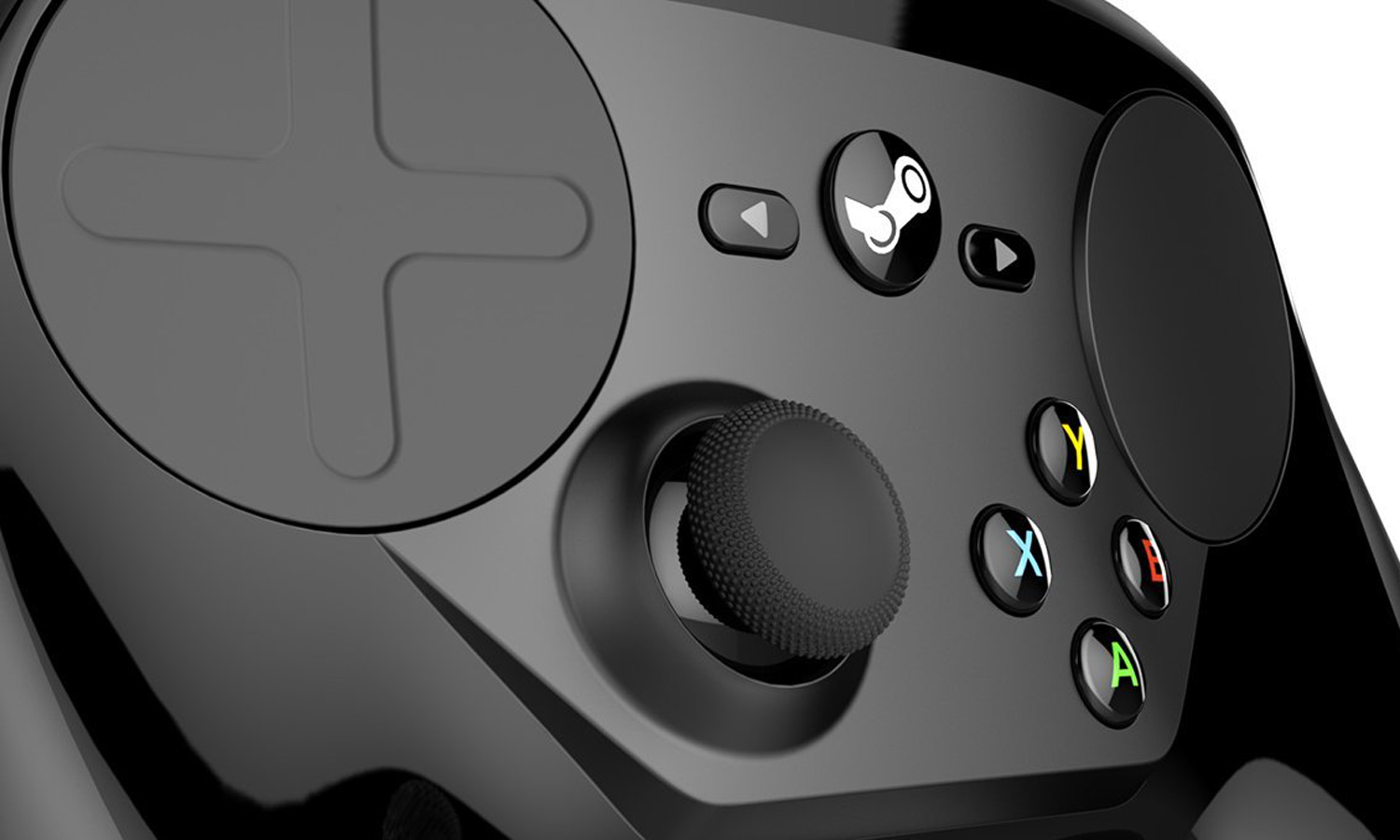
Tweaking the Steam Controller's settings is simple — although, depending on the game, you may not need to. On SteamOS, most games come pre-programmed with Steam Controller-optimized button configurations, from Shadow of Mordor to Borderlands: The Pre-Sequel.
Other games, like Portal, require gamers to program commands by hand. The care that Valve took in programming all of the controller's options becomes evident here. Every single facet of every single button is available for users to tweak, and doing so is quite simple. You can map mouse functions, keyboard commands and even joystick modes for flight sims and fighting games.
By running your fingers and thumb over the pad, you can use it like a mouse. The concept is fascinating.
You can control mouse sensitivity, configure button combinations, and even access a whole menu of advanced options that range from "gyro pitch neutral angle" to "output anti-deadzone buffer." Most users probably won't need to figure out what these mean, much less adjust them, but Valve's commitment to putting power in users' hands is impressive.
On a Windows machine, the Steam controller is nothing too special. It's just another controller in a field that's already saturated with them, and where the Xbox One controller reigns as the de facto go-to for anyone not content to use a mouse and keyboard. You can still access the incredibly granular customization options, but an Xbox One controller right out of the box will probably serve just as well, or an Xbox One Elite controller for more competitive players.
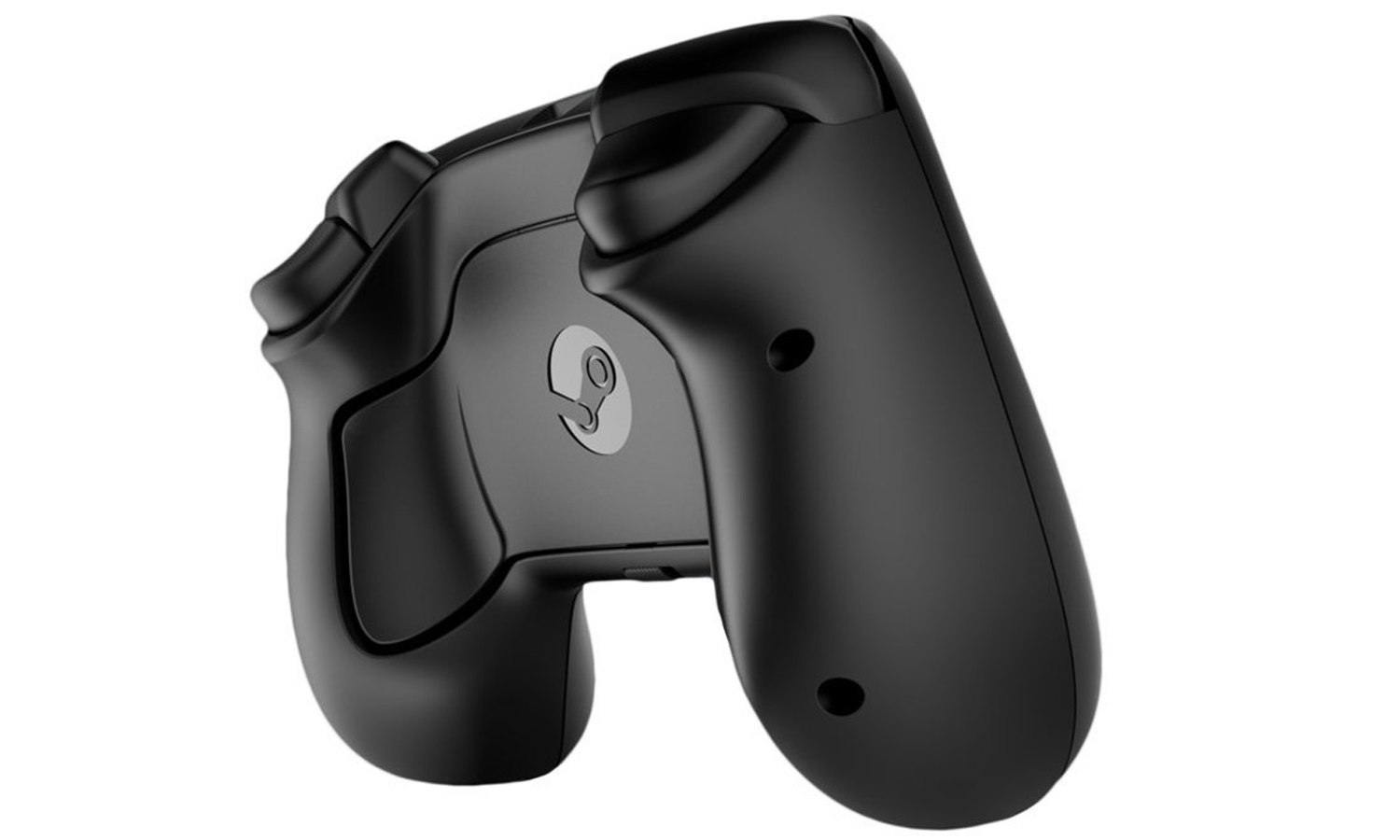
On a SteamOS machine, though, its function is a bit more complex. Since Steam Machines want to be living-room PC replacements, sort of a hybrid between PCs and consoles, Steam's device has to do more than just play games. The controller must act as mouse and keyboard when browsing the Internet or nongame apps. Here, the controller is functional. It takes a few days to get comfortable typing on it, but it is unquestionably more efficient than selecting one letter at a time with a cursor or a motion-controlled remote.
I would have been more comfortable navigating SteamOS with a wireless keyboard and mouse, but not every living room has the proper setup for these peripherals. The Steam Controller does an adequate job of splitting the difference.
Performance
The two words you need to know before purchasing a Steam Controller are "learning curve." If this peripheral is not out to reinvent the PC controller game, it's at the very least here to shake things up. No matter what genre of game you play, you'll have to re-adjust some of your long-held habits and preferences. Whether this is a worthwhile trade-off for ditching the mouse and keyboard will depend very much on your preferred genres and your level of play.
Every single facet of every single button can be tweaked, and doing so is quite simple.
In order to test the Steam Controller, I played it with Titanfall and StarCraft II: Legacy of the Void on a Windows PC, and Middle-earth: Shadow of Mordor on SteamOS. (The former two games are not available on Steam, which means I had to customize my own control schemes and link them in manually.) My experience was all across the board, but Shadow of Mordor was, by far, the best it got. This action/adventure game is all about executing quick, fluid combos, making it ideally suited for a controller rather than a mouse and keyboard.
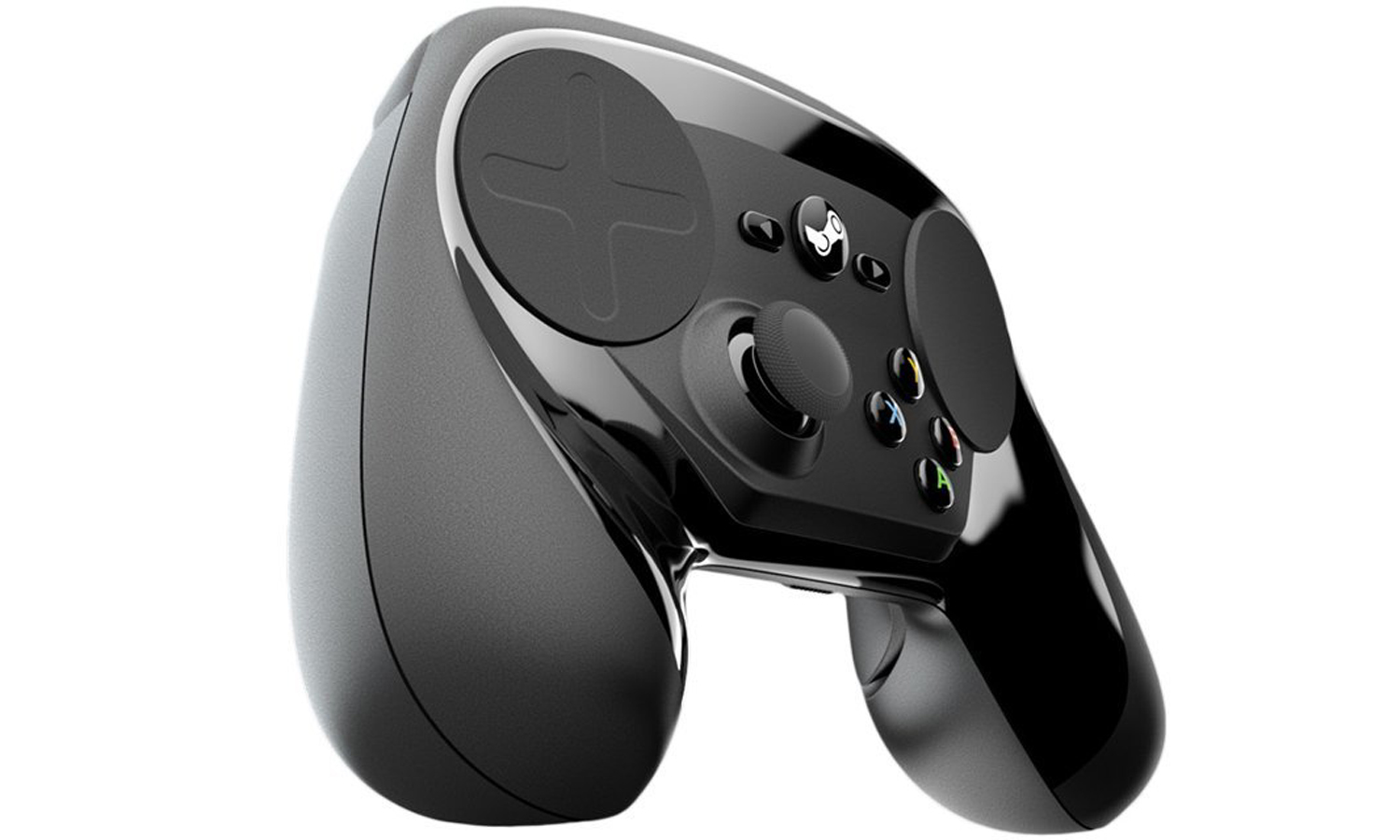
I found that having the analog stick and face buttons so close to each other was a little uncomfortable, and using the haptic pad as a camera rather than a second analog stick took a lot of getting used to. However, once I had completed a few quests, I was able to navigate J.R.R. Tolkien's famous world and slay villainous Uruks with reasonable fidelity.
Titanfall was more of a mixed experience. First-person shooters tend to work extremely well with either a PC/mouse combination or a controller, but it's not so easy to control with a hybrid of both. Moving and shooting was simple enough, but I found that I could not get anywhere near the level of precision I needed with the haptic pad to rapidly change my aim or survey my surroundings.
I knew Legacy of the Void would be the true test of the Steam Controller's capabilities. The whole point behind the haptic pad was to make genres like RTS and MOBAaccessible to a couch-bound audience, previously almost unthinkable on living room consoles. The results were not as encouraging as I had hoped.
MORE: Best PC Games
After painstakingly programming every button, I hopped into a simple map, and found the process of constructing buildings, raising an army and taking the battle to my enemies to be extremely cumbersome. I missed having access to dozens of key commands. And when I needed to quickly scroll across the screen, select a unit, give it a command and re-select my entire army halfway across the map, the process was laborious and unintuitive.
The two words you need to know before purchasing a Steam Controller: learning curve.
To give credit where it's due, it worked. I was absolutely able to complete a simple StarCraft II map with a controller, which is something of an accomplishment. But I can't imagine competing with such a device, especially at a high level, or using it to tackle an entire campaign.
Bottom Line
While the Steam Controller does everything it promised to do, it doesn't do any of it in a manner that's superior to existing peripherals. If you want a controller that can play action/adventure, RTS and FPS games, and can control multimedia and browse the Internet all with equal fidelity, such a device does not yet exist. The Steam Controller is perhaps the first meaningful step toward creating one, but though this device aims high, it lands somewhere in the middle.
If you buy a Steam Machine, it will come with a Steam Controller by default, and learning to use it will simply be part of the experience. For those looking for an all-purpose PC controller, on the other hand, the device represents uncharted waters. You may find something quite special — or quite frustrating.
Marshall Honorof is a senior editor for Tom's Guide, overseeing the site's coverage of gaming hardware and software. He comes from a science writing background, having studied paleomammalogy, biological anthropology, and the history of science and technology. After hours, you can find him practicing taekwondo or doing deep dives on classic sci-fi.
-
guy15s You should probably try an actual steam game with the controller if you're going to test how responsive it is. I play Witcher 3 with the controller and I experience issues where my control scheme won't recognize diagonal inputs on the stick, something that it has no problem doing on Steam games. It could just be that your settings were not quite right and you probably would've benefited by playing an actual steam game with community profiles that have been fine-tuned for the game. I agree that there is a bit of a learning curve with the controller, but after about 5-10 minutes, I still found it multitudes easier to work with than the XBox controller, especially given how seamless the experience can be since you can actually easily use the controller in almost any interface, including desktop.Reply
I am definitely looking forward to the non-steam game improvements, though, and they could definitely afford to focus on making control settings more accessible and ironing out some of the bugs the controller has with certain games. I still think it is a shame, though, that you chose to focus on non-steam games and critiquing controller responsiveness on controller configurations you built in a day. The steam controller is definitely very particular and finicky right now, but it seems you took the least optimal path for the controller to have a chance to shine. -
guy15s It's a shame you didn't try any actual steam games. I currently play Witcher 3 outside of Steam and it has a lot of control issues that don't come up on Steam games. The lack of responsiveness and everything might have just been due to you using a DIY controller configuration you built with a day of testing on a non-steam game. The controller still has some kinks to work out, but I'm a fair bit disappointed that you didn't at least try a Steam game with a community profile that has been ironed out so you could actually judge the controller's performance, and not the steam configuration settings and the controller's ability to cooperate with non-steam games (which both admittedly need work.) Also, this is just anecdotal and I do agree that there is a bit of a learning curve, but I found the learning curve to get more comfortable with the Steam Controller over the XBox controller extremely short, if not instantaneous. It's really not all that out of place, and the haptic touch pad, while different, fits much better with UI made for PC's and I can't see how you wouldn't see an instant improvement from that over trying to perform mouse actions with an analog stick. The learning curve away from KB&M, though, has definitely been difficult in some respects, though. Mostly only when I'm playing non-steam games on shoddily-made custom profiles, though. :pReply
